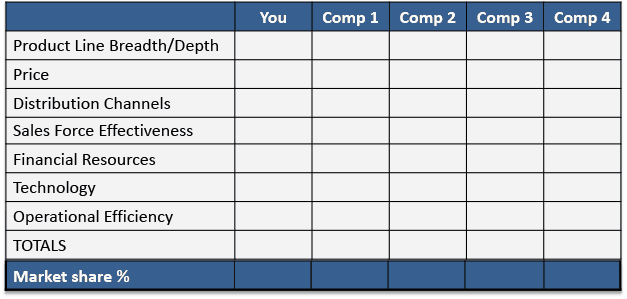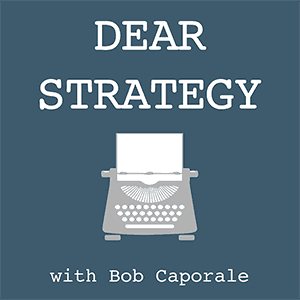Dear Strategy:
“What are the best practices to benchmark competition?”
Back in Episode 24, which you can access by clicking here, I covered some ways that you can determine the strategy of your competition. I focused that answer on how to gather information about your competitor, whereas, to answer this question, I would like to focus on exactly how you go about analyzing what you discovered.
One of the things that I like to do is put together a quick chart that allows you to compare certain value-added features and characteristics of your product or company to that of your competitors. The resulting chart will look something like the illustration below.

Although this type of analysis looks fairly straightforward, there are a few tips that I’d look to offer before you proceed:
- Make sure that you choose your left-hand column based not on what’s important to you, but, rather, on what’s important to your customers. In short, this should be a list of benefits, not necessarily a list of features. And the list can be pretty darn long if you want it to be – so don’t be afraid of that.
- When filling in the columns, you can use a number ranking, a red-yellow-green ranking, or, my personal favorite, a Harvey-ball system as shown below. Using a system like this will allow you, in a glance, to look for areas of weakness in your competitors, which will also represent unmet customer needs that are ripe to become filled by one of your strategic initiatives.
![]()
- I always like to include at least one competitor on this list that doesn’t yet exist. That may seem counterintuitive, but it helps to think about what a competitor coming into the market with a fresh set of eyes might have in the way of strengths and weaknesses that you do not. What if Google, Amazon or Apple were to enter your market? What might a competitor like that do? And is it something that you can do first?
Of course, this is just scratching the surface on competitive benchmarking. But you might find that even a simple analysis like this will help you to identify strategic threats and opportunities that you can use within the context of your overall strategic plan.
Listen to the podcast episode
Dear Strategy: Episode 036

###
Bob Caporale is the author of Creative Strategy Generation and the host of the Dear Strategy podcast. You can learn more about his work by visiting bobcaporale.com.




